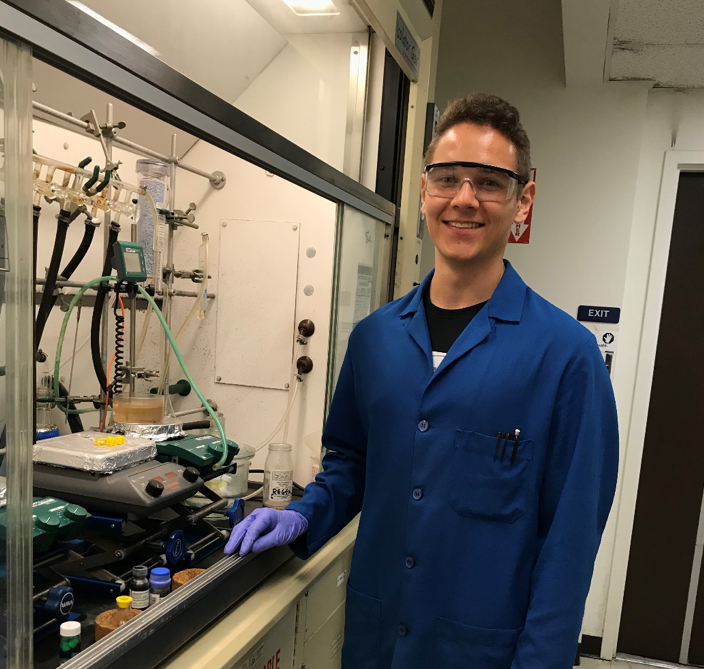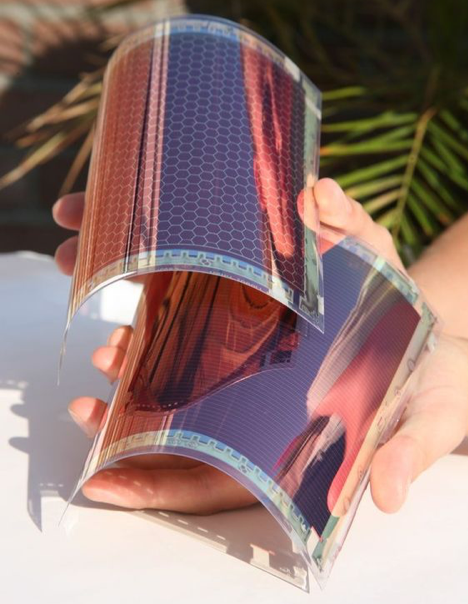By: Alexander Schmitt
Hi! My name is Alexander Schmitt and I am second year graduate student in the Chemistry department here at USC. With the support of the Wrigley Institute, I’ve spent this summer working on organic solar cells and deepening our understanding of the mechanism governing these systems.
Organic solar cells are a promising, more flexible, more lightweight, and cheaper alternative to the traditional silicon-based cells we can see installed on rooftops all over the country. So as opposed to of having heavy, brittle blocks as solar cell we could envision having light, bendable films such as the ones being explored for foldable displays in smartphones!
Instead of having silicon crystals to generate and transport the electrons we need to produce electricity in a solar cells, these organic cells rely on a class of materials termed “conjugates organic polymers”. Polymers are simply long chains of molecules that are held in place by bonds between these molecules and are actually what makes up all these plastic materials we are using every day. They are considered organic polymers when these molecules are mainly made up of the chemical elements carbon and hydrogen. For using them in solar cells we need these polymers to be able to transport electrons so that we can use them to generate electricity with these cells. We realize that by constructing conjugated polymers: those polymers contain arrays of alternating single and double bonds between adjacent atoms which creates “electron clouds” above and below the plain of the polymer. These electron clouds are highly conductive and can transport the electrons we need for generating electricity.

Solution of conjugated polymers in chloroform (left) and a polymer film coated on a glass slide (right).
Over the course of this summer I made a family of such conjugated organic polymers with a number of different chemical groups attached to them so that we can compare how these different groups might change the properties of the polymer. For instance, we are interested to see whether these groups make transporting electrons though the polymers more efficient. The characterizations of these polymer are still ongoing right now, but I’m hoping that with the help of the Wrigley institute by the end of the summer we will have gained some more insight into the working mechanism of organic solar cells!


